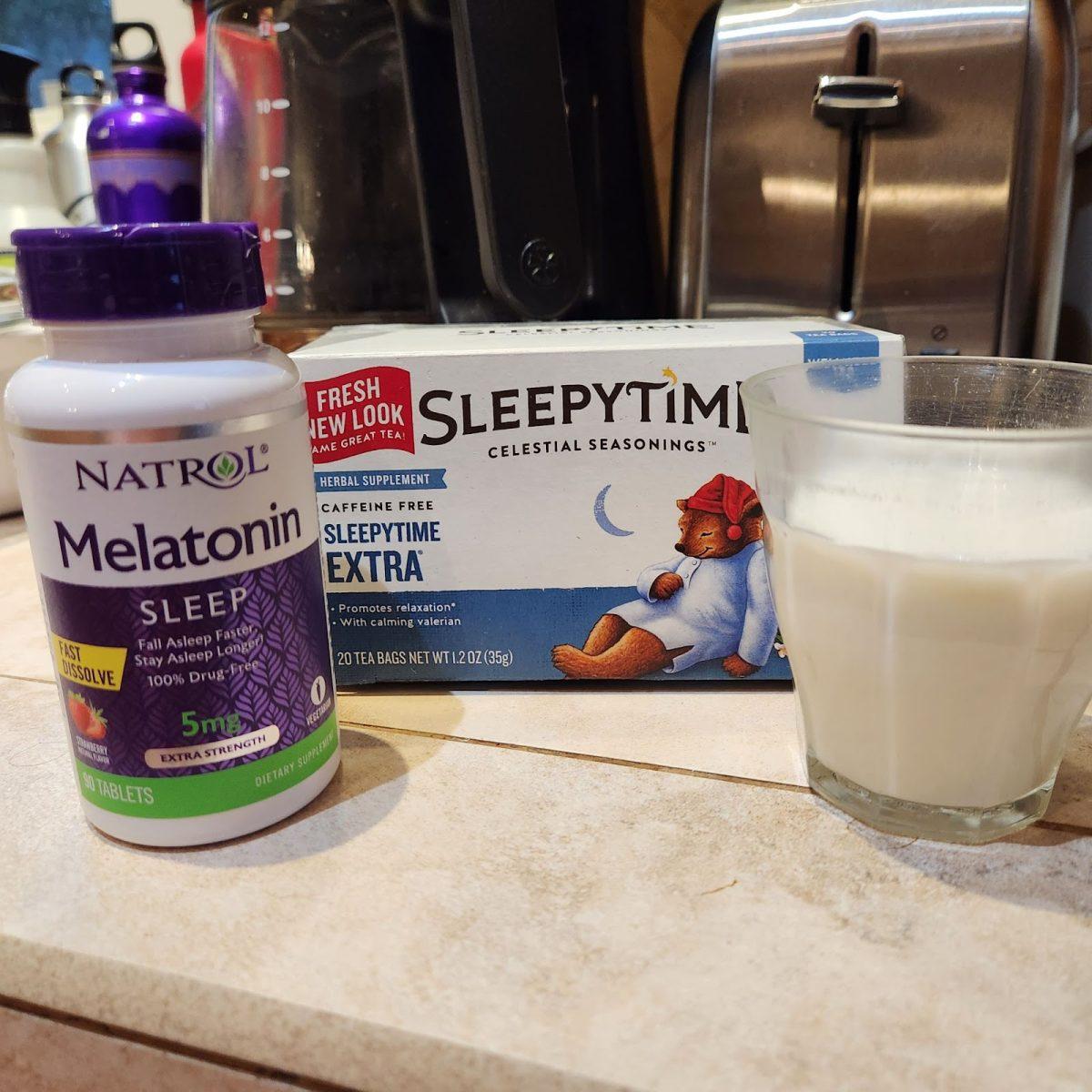For something essential to human function, you’d think sleep would come easier to the general population. But alas, it can take a lot of work for many to be able to finally doze off. Fortunately, there are numerous methods one can use in order to get some sleep. Not every technique works for every person, but people can try different methods until they find one that fits them.
For many people, falling asleep is a nightly struggle. According to the American Sleep Apnea Association, “sleep-related problems affect 50 to 70 million Americans of all ages and socioeconomic classes.” Sleep problems can come from a variety of reasons such as anxiety, serious sleep disorders, or an overactive imagination. Sleep deprivation can lead to many problems. Many students have complained about not getting sufficient sleep, as well as the lack of motivation and brain fog that comes with that.
Repeated lack of sleep leads to a sleep debt, which is when you fall behind on the amount of sleep you require each week to be healthy. Having a sleep debt has a cumulative effect that can lead to mood changes, an inability to think clearly, and fatigue. This is because while you’re asleep, your body is clearing your system of adenosine, a byproduct of chemical reactions in your body. Adenosine buildup affects how much energy you have in the day. The best way to get rid of it is to get sufficient sleep. Fortunately, there are some techniques to help you fall asleep on time so you can wake up feeling more refreshed.
Methods of falling asleep typically fall into roughly three categories, the first being things you can take and digest. A glass of warm milk is one of the most well known techniques. Warm milk has various nutrients that promote sleep, and the protein in the milk can also help you feel full so you can rest easy and not be hungry. Sleepytime Tea is another popular choice, with key ingredients being chamomile and valerian root, which both contain calming properties. And of course everybody recognizes their mascot, the sleepy bear dressed in an old fashioned nightgown completed with a cap.
Then there’s the “nuclear option, or the last resort, “ melatonin pills. Melatonin is a hormone released by the pineal gland in your brain that makes you sleepy and helps maintain your circadian rhythm. It can either be taken in pill or gummy form. According to an article by Mayo Clinic, taking melatonin pills is an effective way to induce sleep, but it can also have some side effects, which includes a headache, dizziness, nausea, and daytime drowsiness. I’ve personally experienced headaches after a night of sleep with melatonin before. It’s definitely recommended to check to see if it conflicts with any other medications.
The second category is sounds. Oftentimes people will listen to the sounds of rain against a window or a crackling fire. There are various apps you can get that play these sounds on a timer, which oftentimes also allow you to mix sounds together. Some people prefer different tones of static such as white or brown noise. Sounds help drown out restless thoughts and provide something to focus on. Another option is to listen to music. A comforting song can be just what you need to relax and drift off, but for some, it’s just a distraction. “Listening to music [doesn’t work for me], or listening to anything really, because then I get really [into it],” an anonymous student explained.
The third category of things you can do to fall asleep is mental techniques. Everybody’s heard of counting sheep; the reason this works is because it’s a rhythmic and repetitive visualization exercise that focuses your mind and puts you to sleep, according to an article on verywellhealth.com by Mark Stibich, PhD. There are breathing exercises, such as the 4-7-8 method where you inhale for four breaths, hold for seven breaths, and exhale for 8 breaths. This exercise activates the vagus nerve in your brain, triggering feelings of calmness. Calming down is the first step to having relaxing sleep, so this can be an important step if you’re having trouble.
Patterns of sleep and the behaviors that surround it are part of psychology, the study of the human mind and its functions, so I asked Greg Garcia, the AP Psychology teacher at Franklin, what techniques he uses. “[There] is a technique used by the United States Navy to, within an 80% accuracy range, ensure someone falls asleep within 5 minutes,” he explained. According to the method, you lie flat on your back, and you smoothen out your forehead like it’s made of dough, then work your way down, relaxing every part of your body. You then envision one of two settings: laying on a beach with blue waters and blue skies, rocking back and forth, or in a black hammock looking up at a starry sky. “Both of these kinds of mental images produce a kind of brainwave called theta waves which are associated with semi consciousness,” Mr. Garcia explained. “And the production of theta waves are key for a stage of sleep called NREM 1 which is semi consciousness, semi wakefulness and that’s the first stage of a healthy sleep cycle.¨ It takes some practice to get this technique down, but Mr. Garcia promises it to be effective.
The idea of “students” and a “lack of sleep” are often held synonymous with each other, but it doesn’t have to be that way. There are a multitude of strategies for falling asleep, so you can try each one out until you find one that suits you. Getting more sleep allows people to feel better, be healthier, and to have enough energy to do everything they want to do. All it takes is a couple tricks and a little effort.


































